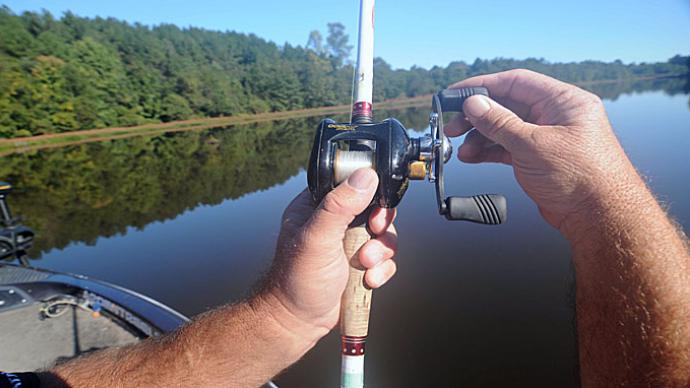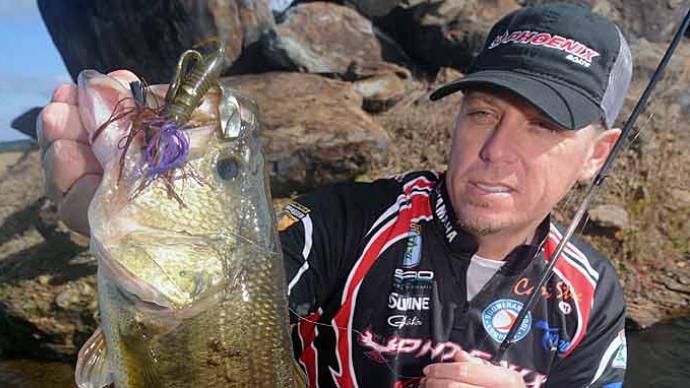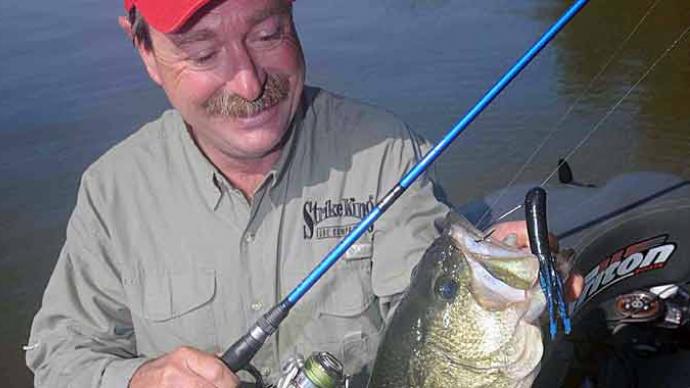| "The only problem I have with the underhand cast is that in order to be efficient and proficient at this cast, you have to practice... practice...practice. Practice in your living room...make short casts during TV commercials...cover all windows and move all lamps. Tell your wife to keep the dip net handy. Seriously, take the time. You deserve it. Please don't practice during our TV show. Practice during Bill Dance or Roland..." |
| --Jimmy Houston |
The importance of accurate casting cannot be overstated. A few hours of backyard practice can make your time on the water much more enjoyable. Always remember that in every casting technique in bass fishing, you always use your wrist, not your arm.
Types of Casts
| Overhand: | Imagine standing in the middle of a clock with your target in front of you. Face the target squarely. Keep your elbow next to your ribs as you raise the rod straight up. Move it sharply back to the 10 o'clock position, then use your wrist to whip it forward, releasing the lure at about 11 o'clock. Follow through, using rod movement to control the cast. |
| Sidearm: | Imagine that you are standing on a clock face. If your target is toward the 3 o'clock position, face the target squarely, and hold the rod parallel to the water. If you're right-handed, move the rod at waist level sharply to the 7 o'clock position, then use your wrist to whip it forward, releasing the lure at about 6 o'clock. Follow through, using rod movement to control the cast. |
| Underhand: | Hold the rod at waist level, parallel to the water, and at a 45-degree angle from the target. Lower the lure 6 to 8 inches from the rod tip. In one quick, smooth motion, "draw" a half-circle with the rod tip, releasing the lure as the rod reaches the bottom of the circle. Use only your wrist and keep the tip of your rod pointed down. Follow through, raising the rod tip to give extra distance and lure control. |
Tips
- Position yourself as far away as water clarity dictates; stay close enough for consistent accuracy.
- Try to make the lure land on the water with as little noise as possible. Cast past the target when possible.
- In windy weather, put tension on the line just before the lure touches down. This will straighten out the line and prevent it from blowing across obstructions.
- Learn casting techniques that permit a low trajectory, such as flipping, pitching, sidearm, and underhand casting.
- Use a quality rod and reel matched to the weight of the lure. Rods with a stiff blank but relatively fast (limber) tip are easier to cast than extremely stiff or uniformly limber rods.
- Cast with the wrist, not the arm and shoulder.
- Lower the lure a few inches below the rod tip before casting; this gives extra momentum to the cast.
- Be sure to "load" the rod tip, causing it to bend backward on the back-cast, then whip the rod forward smoothly.
- Fill the spool of any reel to within 1/8 inch of the lip of the spool. DO NOT OVERFILL!
- If you get a bird's nest on a baitcaster, try pulling the spool out and pulling the line off the spool from the side. This sometimes works when all else fails. -- D.P.
If you would like more information about this topic, please take a look at the links below.




